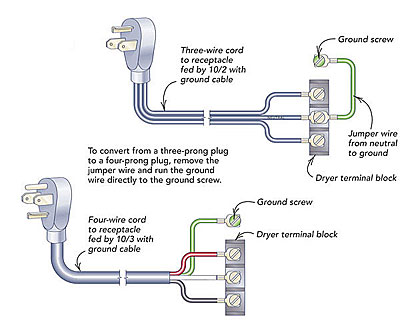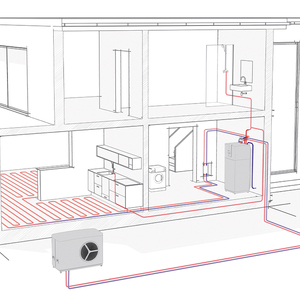Q:
I work in a hardware store, and I am frequently asked about the connection on clothes dryers. It seems that in recent years, the power supply has been changed from a three-wire system to a four-wire system. When my customers move into a new house or apartment and they have an old appliance or when they buy a new appliance for an older dwelling, there is a conflict between the receptacle and the power cord. Some people want to change the power cord, and others want to change the receptacle. What is the safest approved method for making the two compatible?
Don Selke, Cincinnati, OH
A:
Rex Cauldwell, master electrician and author of Wiring a House (The Taunton Press, 1996), replies: A dryer can easily be converted to accommodate a three-wire or a four-wire pigtail (cord). However, it’s not as easy to change the house wiring and receptacle. Never change a three-wire receptacle to a four-wire receptacle without also replacing the wire. Thus, the dryer’s pigtail connection is changed most often. Instructions for making this change are always found in the dryer’s instruction manual.
Typically, a three-terminal block exists in the back of the dryer with a green grounding screw mounted close by on the frame. From the factory, dryers normally are wired for a three-wire cord by having a jumper wire that runs from the green grounding screw to the center neutral terminal on the terminal block. Thus, the neutral terminal and dryer’s frame are the same potential. The installer just hooks a threewire cord onto the three-terminal block.
To convert a dryer to a four-wire hookup, remove the jumper wire, then connect the ground wire in the four-wire cord to the green screw. After that, connect the other three (hot/neutral/hot) wires onto the threeterminal block, which is also hot/neutral/hot.


























